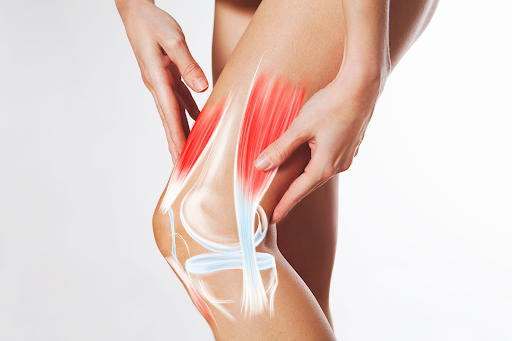How to Tell You’ve Suffered an ACL Tear
It could be more than a minor tweak when your knee buckles or feels unstable after an injury. The anterior cruciate ligament (ACL) is one of the critical knee ligaments that keeps your knee stable and functioning. You might be dealing with a torn ACL if you’ve experienced a sudden “pop” sensation during a football tackle, a sharp pivot, or any sports injury. The symptoms often include knee instability, swelling, and difficulty walking. A complete tear or even a partially torn ACL disrupts the internal structures of your knee, affecting its range of motion and overall stability.
If knee injuries like an ACL tear heal improperly, they can lead to further cartilage injury or developing osteoarthritis over time. Ignoring the signs can increase your risk of further damage, whether it’s a partial or complete tear. A physical exam or magnetic resonance imaging (MRI) can reveal the extent of the damage, whether it’s a torn ligament, damage to other knee ligaments like the medial collateral ligament, or articular cartilage issues. Here’s everything you need for how to know you’ve suffered an ACL tear:
Most Common Causes of an ACL Tear
An ACL tear is a common injury, particularly among athletes and active individuals, often resulting from sudden or high-impact movements. The ACL plays a critical role in stabilizing your knee, and when it’s put under excessive strain, it can lead to a partial or complete tear. Movements such as rapid direction changes, improper landings, and contact during sports significantly increase the risk. Below are some of the most frequent causes of ACL injuries:
Sudden Direction Changes
Quick pivots or cutting motions, especially in sports like basketball or soccer, place extreme stress on the ACL.
Improper Landing Mechanics
Landing awkwardly from a jump can overstretch the ligament, leading to a torn ACL.
Direct Blows to the Knee
A football tackle or collision can cause ligament injuries, including damage to the medial collateral ligament or posterior cruciate ligament, alongside ACL tears.
Overextension of the Knee
Extending your knee beyond its normal range of motion can strain or tear the ligament.
Weak Muscle Strength
Insufficient support from the surrounding muscles increases the likelihood of ligament injuries.
Repetitive Stress
Frequent high-impact activities can wear down the ACL, leading to a higher risk of injury.
These movements often result in knee instability, damaged ligaments, or related injuries like articular cartilage damage. Understanding these common causes can reduce the chances of a torn ACL and maintain a stable and healthy knee.
Signs You’re Dealing With an ACL Tear
Recognizing the signs of an ACL tear is crucial for seeking timely treatment and preventing further damage to your knee. Most ACL tears occur during sports injuries or accidents involving a sudden stop, pivot, or awkward landing. The anterior cruciate ligament plays a vital role in stabilizing your knee, and when it’s partially or completely torn, the symptoms are hard to miss. Here are the most common indicators that you may be dealing with an ACL tear:
- A Loud “Pop” Sound: Many individuals report hearing or feeling a distinct “pop” when the injury occurs, signaling damage to the knee ligaments.
- Rapid Swelling: Swelling typically begins within a few hours after the injury due to inflammation and internal bleeding around the damaged ligament.
- Knee Instability: A torn ACL often leads to knee instability, making it difficult to bear weight or perform basic movements without the knee “giving out.”
- Severe Pain: Pain is usually immediate and localized to the front or sides of the knee, especially if other knee ligaments like the medial collateral ligament or lateral collateral ligament are involved.
- Limited Range of Motion: Difficulty bending or straightening the knee is a common symptom, often accompanied by stiffness.
- Bruising and Tenderness: While less common, bruising around the kneecap or shin bone can occur with severe ligament injuries or related injuries.
If you experience these signs, it’s essential to consult a sports medicine physician or orthopedic surgeon for a physical exam and magnetic resonance imaging (MRI). Early diagnosis and treatment are key to restoring knee stability and preventing long-term complications like developing osteoarthritis or cartilage injury.
Surgical Vs. Non-Surgical Recovery Options
For individuals with a complete ACL tear, surgical treatment is often the most effective option for restoring knee stability, range of motion, and the ability to return to high-impact activities. The anterior cruciate ligament is essential for maintaining proper knee function, and a damaged ligament rarely heals on its own. ACL reconstruction surgery provides a reliable path to recovery, particularly for those who want to play sports or prevent further knee injuries. Here’s why surgical techniques are often recommended:
- Reconstruction of Stability: ACL reconstruction surgery replaces the torn ligament with grafts, such as patellar tendon or allograft tissue, to restore knee stability.
- Prevention of Related Injuries: A stable knee reduces the risk of damaging other tissues, such as the medial collateral ligament, lateral collateral ligament, or cartilage.
- Improved Patient Outcomes: Advanced surgical techniques and physical therapy during rehabilitation lead to long-term success in most ACL tears.
- Customized Graft Options: Orthopedic surgeons can choose the best replacement tissue — like kneecap tendons or other tissues—tailored to your activity level and anatomy.
- Avoidance of Degenerative Issues: Untreated ACL injuries can develop osteoarthritis or articular cartilage damage, which surgery can help prevent.
- Better Range of Motion and Strength: The rehabilitation process after surgery focuses on restoring muscle strength and flexibility, allowing you to regain full functionality.
- Return to Active Lifestyle: For athletes or active individuals, surgery offers the best chance to resume activities with reduced risk of re-injury or graft failure.
ACL surgery, combined with a personalized rehabilitation period, gives patients with anterior cruciate ligament injuries the best opportunity to recover fully and enjoy a stable, functional knee. Delaying surgery for a complete ACL tear can increase the risk of long-term complications for the injured knee, making early intervention the preferred choice for optimal patient outcomes.
Why Patients Trust One Oak Medical With Their ACL Treatments
At One Oak Medical, we approach ACL injuries with expertise and care. From the moment an injury occurs, our team of orthopedic surgeons and sports medicine physicians work to craft treatment options that align with your goals. We’ve worked with patients across North Jersey to help them deal with everything from partial tears to full reconstruction and any other injuries you may be dealing with.
We understand when ACL injuries occur it can impact your daily life. We’re committed to providing cutting-edge surgical techniques and a personalized rehabilitation period with experienced physical therapists. With a proven track record of successful patient outcomes from various leg and ankle conditions, we’re here to help you move forward confidently. Let’s address your injury and prevent related issues like developing osteoarthritis or further ligament injuries.

